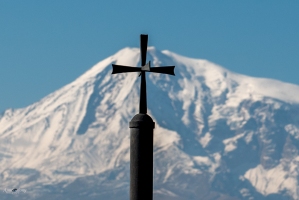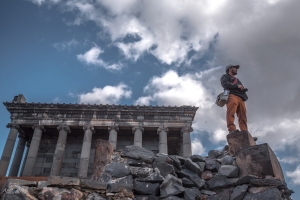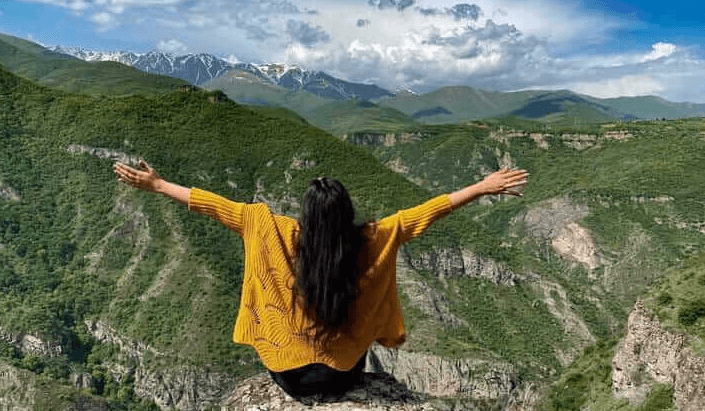
Mount Ararat is the highest point of the Armenian Highland-5165 m. above sea level.
One of the names of historical Armenia is Araratian Kingdom. Some Armenian territories were lost during the Soviet period,among them was the Biblical Mount. Though Ararat is not part (physically ) of current Armenia, but is still the main symbol of the country. The 12th capital of Armenia was designed in the Soviet times. The main architect designed the city in the way , the windows of the houses face to Ararat, so that the inhabitants of the capital could see the Biblical Mount as soon as they opened their eyes.
2. Variety of Landscape and Short Distance

Occupying only 29000 sq.km Armenia’s lowest point is 375 MSL and the highest point is 4091 m. When on the border with Iran (very South of the country) is already summer, you can find snow in the mountains, while on Ararat valley the fruit trees are in blossom and spring flowers are spread in the valleys. Being on 2000 above sea level at the lake surrounded with bare mountain, you drive just 5 minutes and appear in the ‘’Armenian Switzerland’’ as the locals call Tavush region. Isn’t it miraculous?
3. Armenia on World’s Oldest Map

The Babylonian tablet (7-6th c. B.C) is considered to be World’s oldest map. Armenia is the only existing country from the mentioned ones. The Armenian Kingdom, which was known then as Araratian or Urartian, bordered on Assyria and Babylon. Current Armenia occupies only a small territory in the North-East of the Armenian Highland.
4. World’s First Christian Nation

Christ’s two Apostles -Thaddeus and Bartholomew were sent to Armenia to spread Christianity. So, secret Christian communities were formed in the country since the 1st century. The Christians were persecuted all over the World until the 4th century. The king of Armenia was the first to proclaim Christianity as the only official religion. Armenian Apostolic Church was founded in 301. Totally new and unique culture and architecture has been formed after the 4th. Century.
5. The only Greco-Roman style Pagan Temple in the Post Soviet Territory.

- When Alexander the Great conquered Persia, Greek culture was spread in Armenia, especially starting from the 3rd-2nd centuries B.C.. When Armenia became a Christian country the pagan temples were either destroyed or converted into Churches (that is why 4th-5th centuries Christian architecture is very similar to greco -roman temples). The Royal summer residence was in Garni (village in current Armenia). It was decided to keep the temple of Mitra (god of the Sun) as respect to the culture of the ancestors. Built in the 1st century A.D., the pagan temple resisted for 17 centuries, when it was destroyed after an awful earthquake. Being the only example of Greco-Roman temple in the whole Soviet Union, the temple was rebuilt in the 20th century (using 80% of the original stones).
6. World’s Second Largest Mountain Lake

Situated on 1950 m a.s.l., Lake Sevan is considered the second largest mountain lake in the World with the surface of 1250 sq km. It has tectonic-volcanic origin and is considered the largest reserve of fresh water in Caucasus. Lake Sevan is surrounded with 4 mountain ranges. The length of the lake is 74 and the width 32 km. The deepest point is 79 m. 28 rivers flow into Sevan and only Hrazdan river flows out of it.
7. World’s Longest Reversible Aerial Tram

Take your Wings and fly over Vorotan gorge admiring its breathtaking Nature and discovering the rich cultural and Natural heritage. This 5.7 km long and 320 m high rope way was recorded in Guinness Book of Records in 2010.


Comments